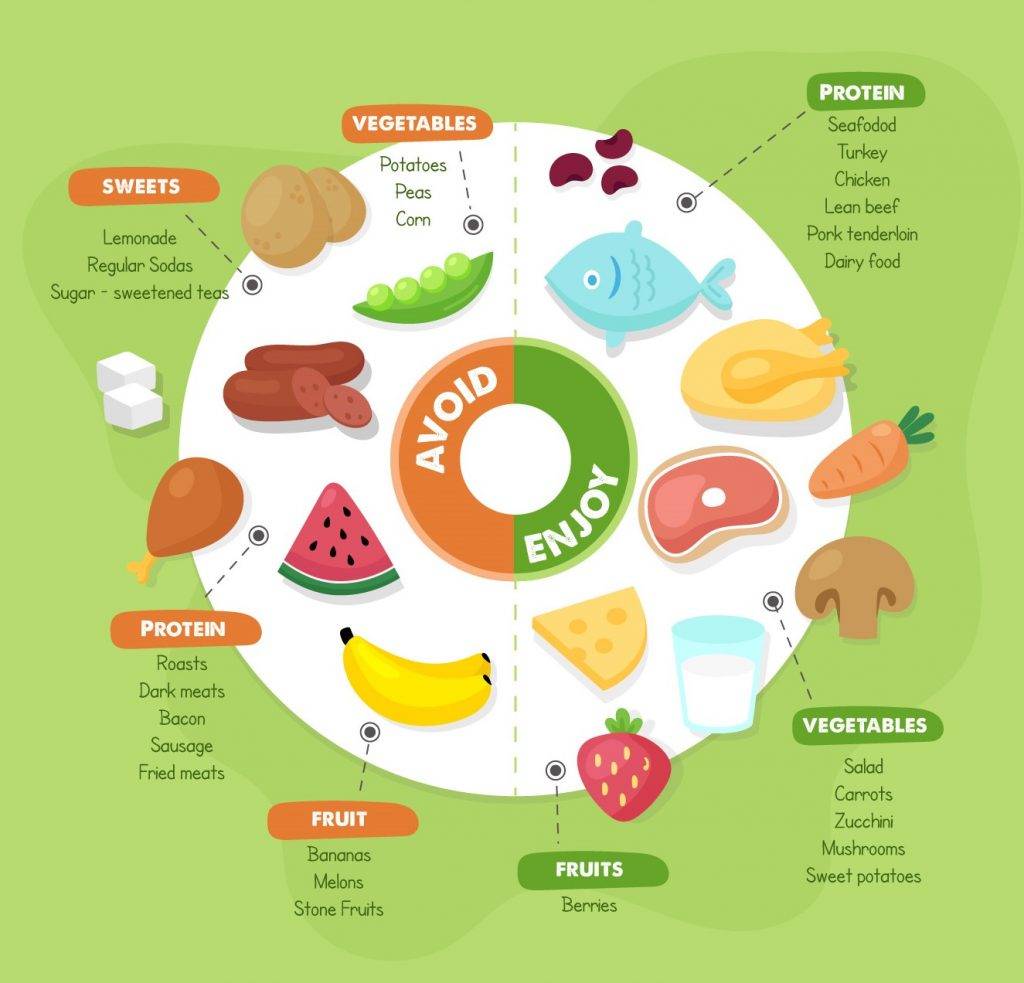Diet plan for diabetes
1.Carbohydrate Management:
Focus on complex carbohydrates with a low glycemic index (GI), such as whole grains, legumes, vegetables, and fruits.
Monitor portion sizes to help control blood sugar levels.
2.Fiber-Rich Foods:
Include plenty of high-fiber foods like whole grains, vegetables, fruits, and legumes. Fiber helps regulate blood sugar levels.
3.Lean Proteins:
Choose lean protein sources like poultry, fish, tofu, legumes, and low-fat dairy.
Limit red and processed meats.
4.Healthy Fats:
Opt for sources of healthy fats, such as avocados, nuts, seeds, and olive oil.
Limit saturated and trans fats found in fried foods, processed snacks, and certain oils.
5.Balanced Meals:
Aim for a well-balanced plate that includes a variety of nutrients from different food groups.
Distribute your carbohydrates, proteins, and fats throughout the day.
6.Regular Meal Timing:
Stick to a consistent meal schedule, and avoid skipping meals to help regulate blood sugar levels.
7.Limit Added Sugars:
Minimize the consumption of sugary beverages, sweets, and processed foods with added sugars.
8.Stay Hydrated:
Drink plenty of water throughout the day to stay hydrated.
9.
Portion Control:
Be mindful of portion sizes to avoid overeating and help manage blood sugar levels.
Monitor Blood Sugar Levels:
Regularly monitor blood glucose levels as recommended by your healthcare provider to understand how different foods and meals affect you.
1.Carbohydrate Management:
Focus on complex carbohydrates with a low glycemic index (GI), such as whole grains, legumes, vegetables, and fruits.
Monitor portion sizes to help control blood sugar levels.
2.Fiber-Rich Foods:
Include plenty of high-fiber foods like whole grains, vegetables, fruits, and legumes. Fiber helps regulate blood sugar levels.
3.Lean Proteins:
Choose lean protein sources like poultry, fish, tofu, legumes, and low-fat dairy.
Limit red and processed meats.
4.Healthy Fats:
Opt for sources of healthy fats, such as avocados, nuts, seeds, and olive oil.
Limit saturated and trans fats found in fried foods, processed snacks, and certain oils.
5.Balanced Meals:
Aim for a well-balanced plate that includes a variety of nutrients from different food groups.
Distribute your carbohydrates, proteins, and fats throughout the day.
6.Regular Meal Timing:
Stick to a consistent meal schedule, and avoid skipping meals to help regulate blood sugar levels.
7.Limit Added Sugars:
Minimize the consumption of sugary beverages, sweets, and processed foods with added sugars.
8.Stay Hydrated:
Drink plenty of water throughout the day to stay hydrated.
9.
Portion Control:
Be mindful of portion sizes to avoid overeating and help manage blood sugar levels.
Monitor Blood Sugar Levels:
Regularly monitor blood glucose levels as recommended by your healthcare provider to understand how different foods and meals affect you.
07:43 AM - Jan 13, 2024 (UTC)

